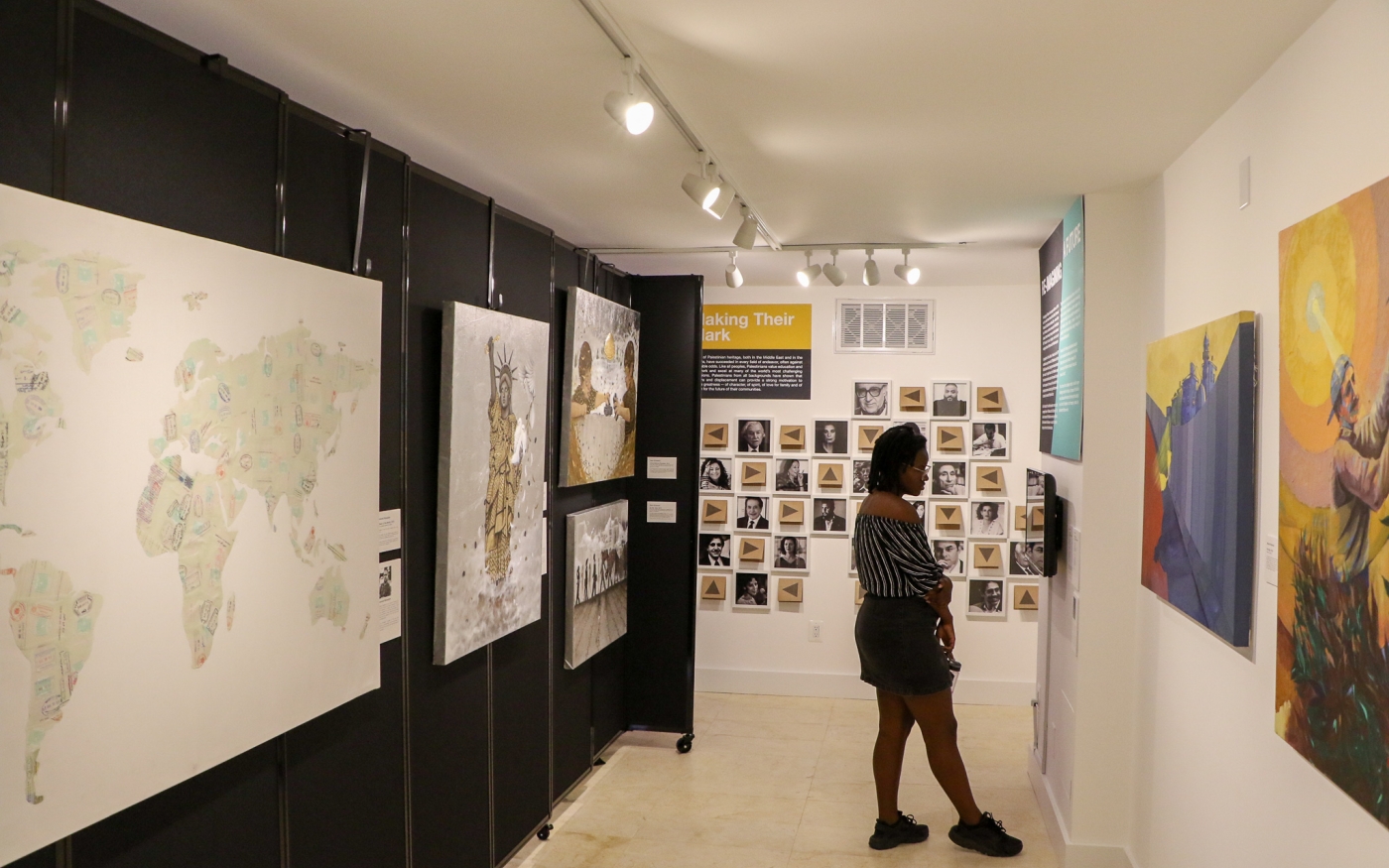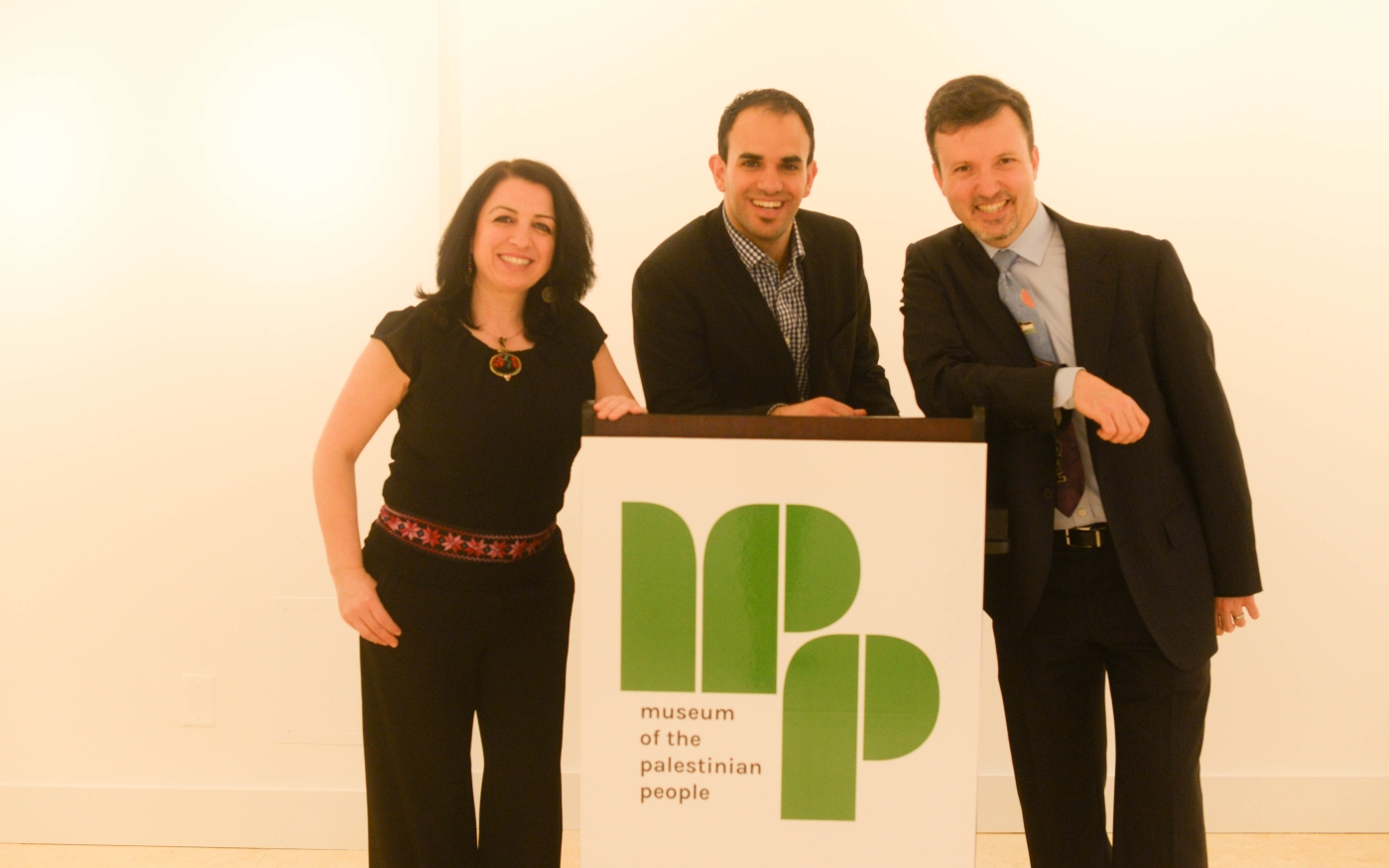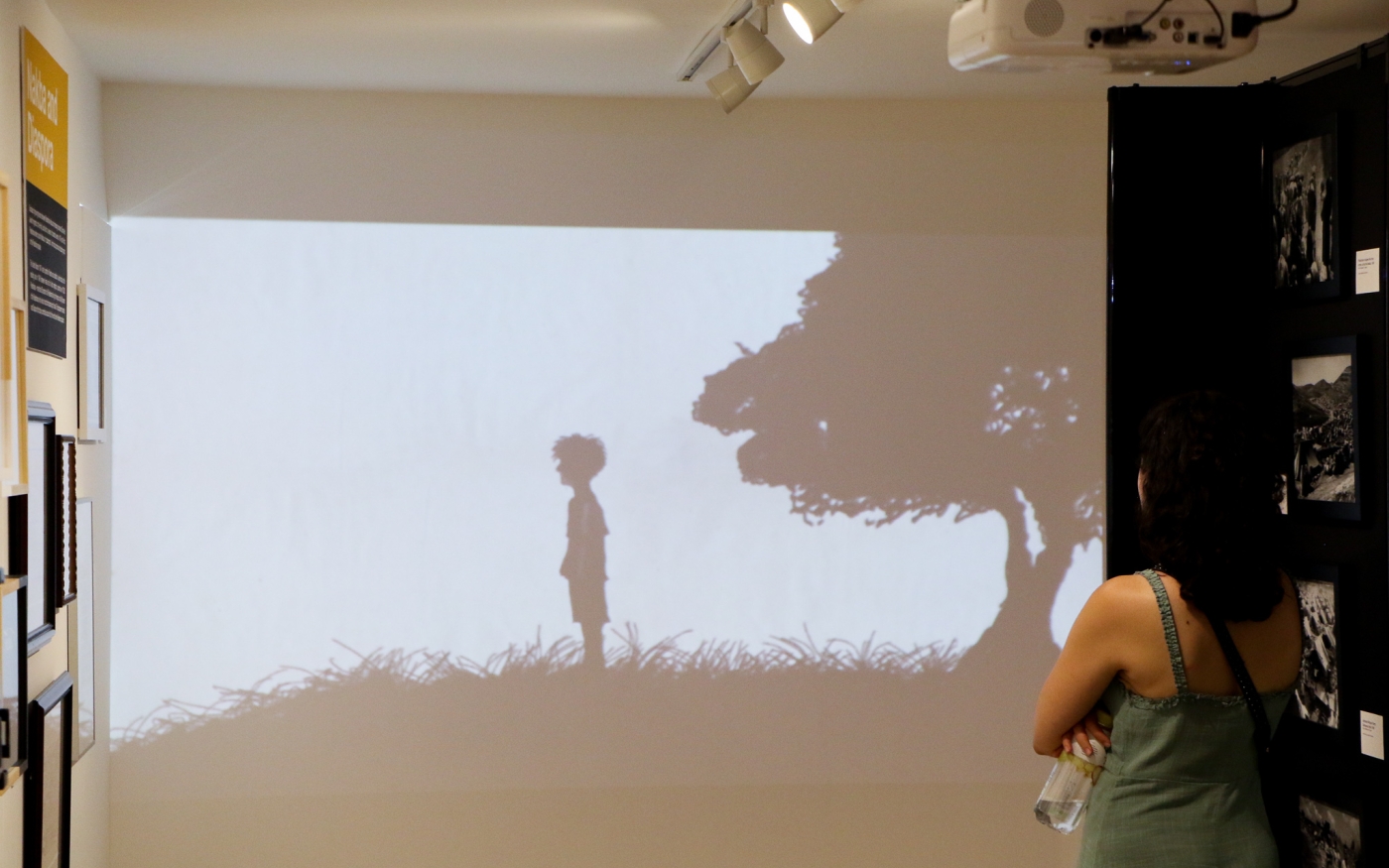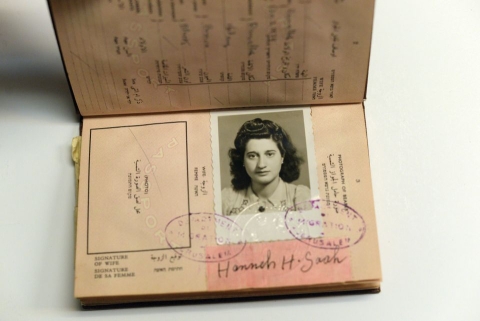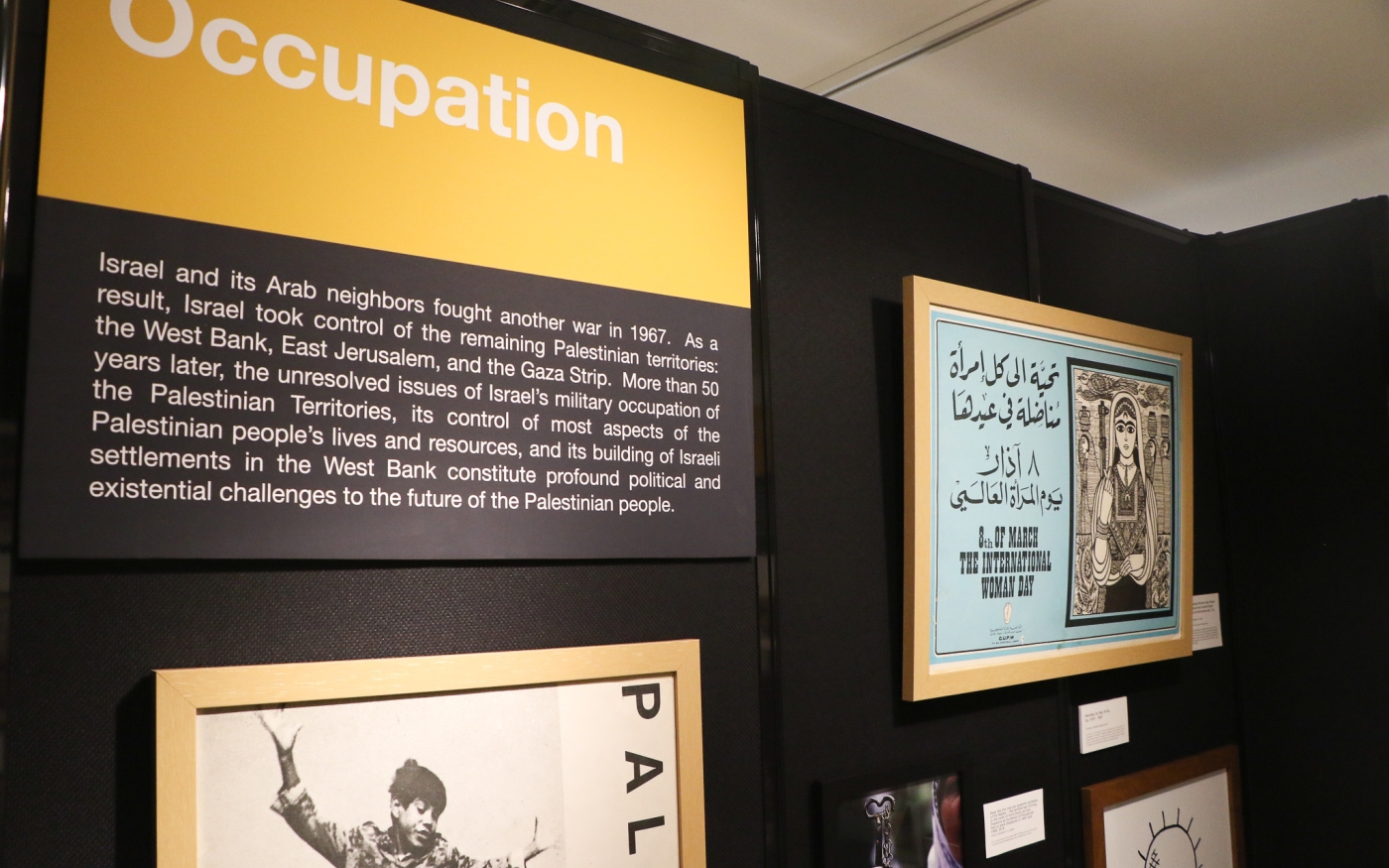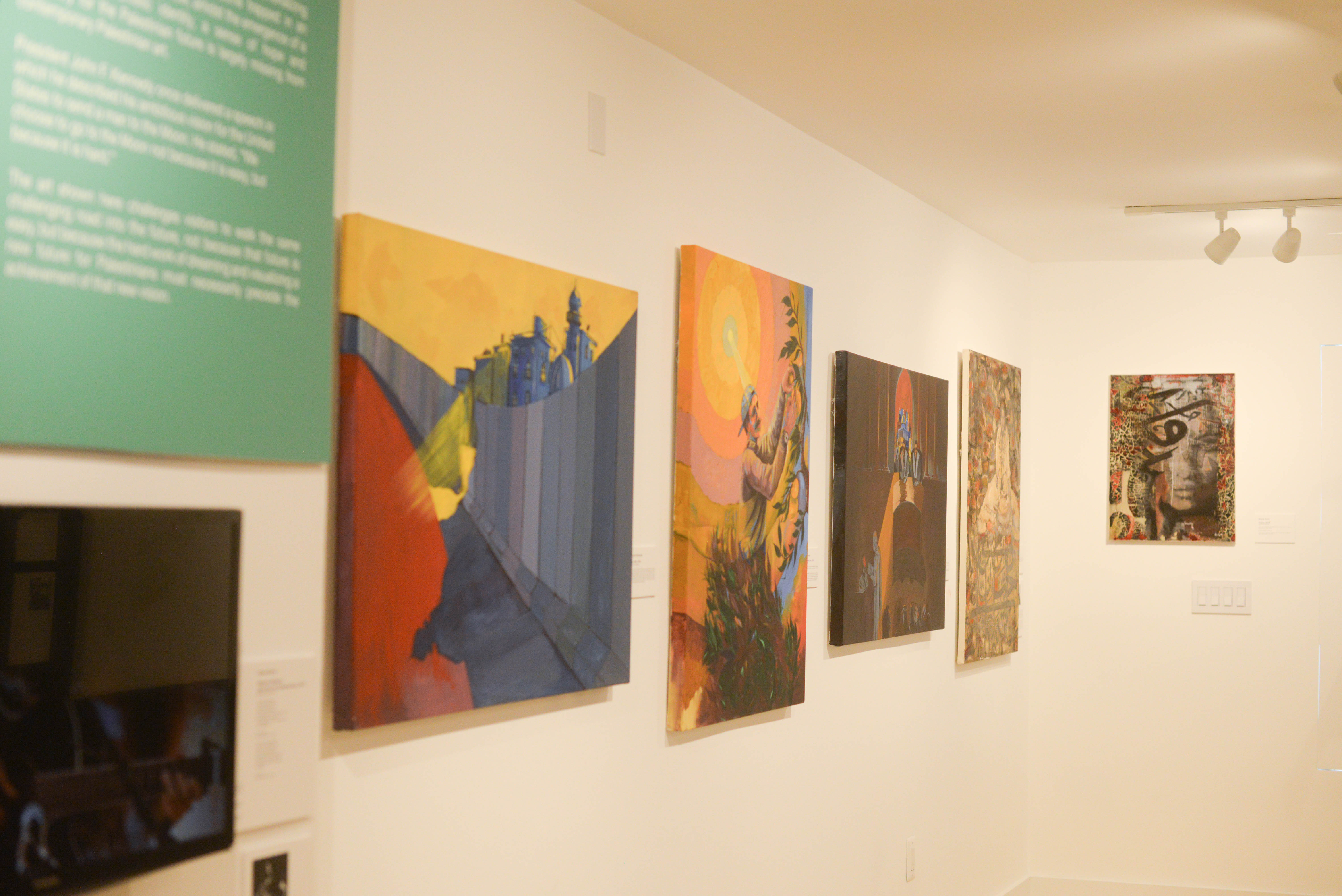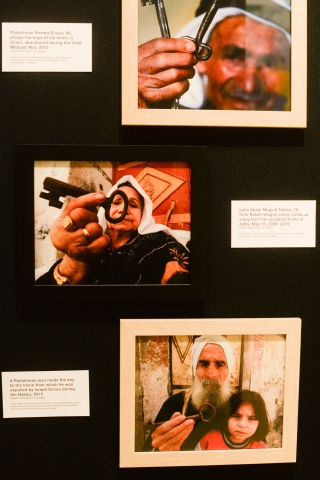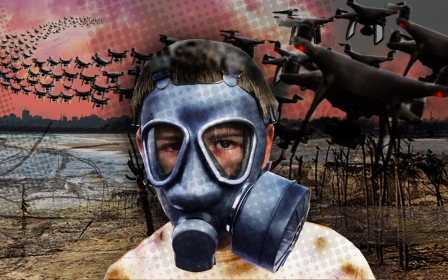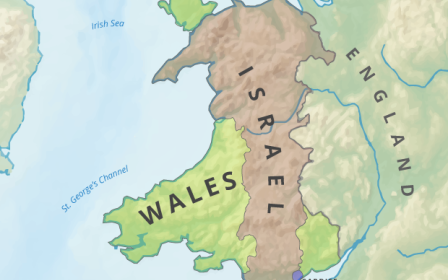Washington's Palestine museum brings new voices to the US capital

Palestinian voices are rarely heard in Washington DC, the political centre of the United States. But in the heart of the city, only a short walk from the White House and Capitol Hill, there now sits a space for Palestinian artists and storytellers to showcase their experiences.
The Museum of the Palestinian People says it aims to be a place where Palestinians can share stories, personal narratives and artistic expression to "transcend separation, fragmentation, and boundaries".
Since it opened in June, it has joined an array of museums, art galleries and exhibitions that have found a home in the US capital.
Its founder is Bshara Nassar, 31, who knows those museums well, especially the ones that highlight the experiences of oppressed peoples, such as the Holocaust Museum, the National Museum of the American Indian and the Laogai Museum.
But Nassar, who came to the US from the West Bank in 2011 to study, says he realised that there was something missing.
"I couldn't find a place where Palestinians could share their story, and history, and culture," Nassar told MEE.
And so, taking the National Museum of African American History and Culture as his inspiration, Nassar did something about it.
Showcasing Palestinian lives
Originally from the village of Nahalin, near the southern outskirts of Bethlehem, Nassar grew up working on his family's farm. For much of his life he has been trying to find ways to spread Palestinian culture.
While in the West Bank he helped out at the Tent of Nations, an educational initiative at his family's farm where, he says, "people from many different countries come together to learn, to share, and to build bridges of understanding and hope".
He came to the US to study at Eastern Mennonite University in Virginia, then in 2015 he co-founded the Nakba Museum Project, a travelling exhibition that visited 50 locations across the US, including New York, Washington and California.
Using pieces created by artists specifically for the project, its purpose was to showcase Palestinian lives through artwork and other forms of storytelling, Nassar said.
Some of the current museum's artefacts date from that project, donated by individuals as well as institutions such as National Geographic and the Institute for Palestine Studies.
Several of Nassar's colleagues from that project now also now sit on the museum's board of directors.
"We were very happy with what we did," Nassar says about the travelling exhibition. "We have seen the fruits of what we planted."
The project stayed on the road until 2018. Then, the owners of a property in Washington's Dupont Circle donated space on its ground floor to host a permanent, Palestine-themed museum.
Starting a conversation
The new institution faced several challenges. One was to decide what to include in the new space, something Nassar says took little over a year. Eventually, following consultations, decisions started to emerge as to what the museum would convey.
Key themes would include the history of the Palestinian diaspora, with a focus on the resilience and accomplishments of Palestinians who were forced to leave their homeland; and how the diaspora have maintained their history and culture during the subsequent decades.
Nassar was nervous while the building was being converted that the project wouldn't meet his own expectations, that the museum needed to represent all Palestinians. But that anxiety vanished once it opened.
"It was really powerful and emotional to see something that we worked on for four or five years being established," he says.
While it is not the first Palestinian museum in the US - that title goes to the Palestine Museum US, founded last year in Connecticut - Nassar says that the institution stands alone in what it can do.
"Like Connecticut, we will showcase Palestinian history, arts and culture. However, we go deeper to focus on the stories around this. Our museum is about starting the conversation rather than simply presenting the art."
The Museum of the Palestinian People may only be the size of an apartment, but it is more than capable of taking visitors on a journey through time and place.
The layout splits into two main sections: the first is a permanent exhibition highlighting historical and cultural artefacts from Palestine; the second showcases the work of Palestinian artists.
When visitors first walk in, they are met with a display of glasswork and pottery from Hebron, famed for its ceramics and glassware.
A Nabatean clay pot dating back 2,000 years is on display alongside the Wall of Fame, which highlights key Palestinian figures from the past centuries and by extension, the breadth of Palestinian history.
Other artefacts are on loan from private collections.
Some of the items emphasise Palestinian identity before the establishment of the State of Israel in 1948, such as a National Geographic magazine spread from 1914 that displays the Ottoman borders of Palestine, a traditional Palestinian thobe, and stamps dating back to the British Mandate for Palestine, which were in circulation from 1920 to 1948.
The museum explores the 1948 exodus known as the "Nakba" - or "catastrophe" - through the displays entitled "Nakba and the Diaspora". Passports from the British Mandate sit alongside wedding contracts from the early part of the 20th century, as well as photos of Palestinians holding keys to their former homes.
Collecting those items, Nassar says, was one of the most difficult aspects of putting together the museum.
"These papers and passports were very dear to people, especially to Palestinians whose identities have been erased and stolen. Not a lot of people are eager to give their proof of their Palestinian identity."
Re-imagining a future
In the second section of the museum, the focus is on life under the Israeli occupation, explains Nada Odeh, a Syrian artist and the museum's curator.
The exhibition presents art as a form of resistance, such as the famous cartoon of the character Handala, which is on display at the museum. The sketch, of a small child with his back turned and hands held together, appears in many of Palestinian artist Naji al-Ali's cartoons, and is widely used as a symbol of Palestinian resistance: Ali himself was assassinated in London in 1987.
"Artwork is not artwork unless you understand there is a language with it," says Odeh.
The work Unconditional Playdate, by Palestinian-Canadian artist Dalia Elcharbini, depicts two children on opposing sides of the Israeli separation wall. The jarring structure, often referred to by Palestinians as Israel's apartheid wall, cuts Palestinians off from each other in the occupied West Bank. In 2004, the International Court of Justice ruled that the barrier was illegal.
Elcharbini says her work is a blend of surrealism and realism, and a "humanitarian outcry for peace and life in harmony". To her, the wall is nothing more than a prop for the children's playdate. "It reimagines the tensions between these two sides of the story," she says.
Ahmed Hmeedat, who grew up in the Dheisheh refugee camp in Bethlehem, uses watercolors, acrylic, oil, ink and charcoal as the inspiration for his murals.
"My art expresses the plight of the refugees and reminds people that the Nakba is an ongoing reality for us," Hmeedat explains in a statement on the museum's website.
"It's important for me to show the world that Palestinian refugees strongly believe in their right to return to their homeland. Even when the elders pass away, the younger generations still remember the suffering of their ancestors."
Plans to grow
The museum has a presence in the heart of Washington - but the US government has become more hostile towards Palestinians since the election of Donald Trump as president in 2016.
The current administration has pursued pro-Israel policies, including moving the US embassy from Tel Aviv to Jerusalem, scrapping aid to the UN agency for Palestinian refugees and closing the PLO's office in DC, which served as a de facto embassy.
But Nassar remains upbeat, explaining that the museum itself has faced few political obstacles. During opening weekend it admitted more than 400 visitors, Palestinian and non-Palestinian alike.
"People are very proud that there is a museum that represents their culture and they feel connected to their history," he says. "For many Americans who came, many said that this is a great addition to the DC culture scene."
The museum runs mostly on individual donations, which range from less than $100 to upwards of $5,000, as well as its $5 entry fee. Its board have plans to expand and find a bigger space, if opportunities for new funding arise.
For now though, Nassar says that his main goal is continuing to focus on the current space and making sure the Palestinian story is told.
"There are so many misconceptions about the Palestinian story," he says, "and this is such a good way to share the story in a non-threatening way, in a way where people are open to hear it."
The Museum of the Palestinian People is located at 1900 18th St. NW, Washington, DC, on the corner of 18th and T street. It is open from 12pm to 6pm on Thursdays, Fridays and Saturdays.
Middle East Eye propose une couverture et une analyse indépendantes et incomparables du Moyen-Orient, de l’Afrique du Nord et d’autres régions du monde. Pour en savoir plus sur la reprise de ce contenu et les frais qui s’appliquent, veuillez remplir ce formulaire [en anglais]. Pour en savoir plus sur MEE, cliquez ici [en anglais].


